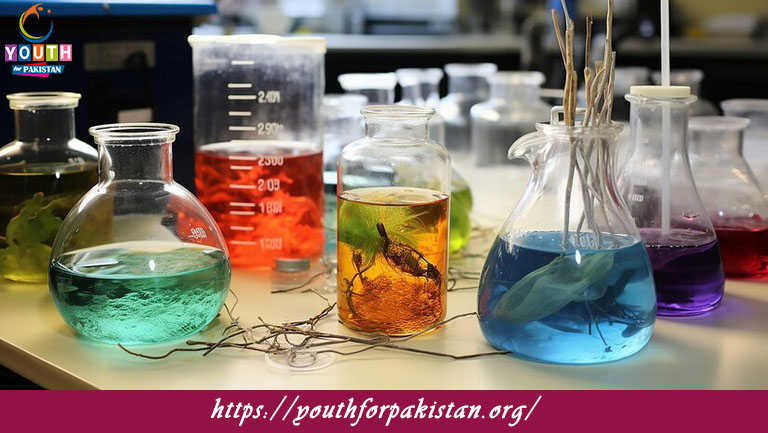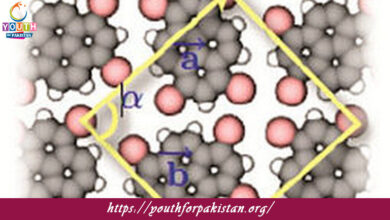Welcome to the Chemical Sensors and Biosensors MCQs with Answers, it helps learners quickly identify areas for improvement in Chemical Sensors and Biosensors Online Test.
| Chemical sensors and biosensors are pivotal technologies in analytical chemistry, designed to detect and quantify specific chemical substances or biomolecules in various environments. They play a crucial role in fields such as environmental monitoring, medical diagnostics, and food safety.
In a chemical sensors quiz, MCQs on chemical sensors and biosensors typically cover topics such as sensor principles, types of transducers (such as optical, electrochemical, and piezoelectric), and their applications. Biosensor technology multiple choice questions explore the integration of biological recognition elements (such as enzymes or antibodies) with transducers to achieve selective and sensitive detection of target analytes.
Analytical chemistry MCQs delve into the methodologies and techniques used in chemical sensing, including spectroscopic methods, chromatography, and mass spectrometry, emphasizing their roles in sensor development and validation.
Sensor applications exam questions challenge students to apply their knowledge of chemical sensors and biosensors to real-world scenarios, such as detecting environmental pollutants, monitoring glucose levels in diabetes management, or ensuring food quality and safety. |
Chemical Sensors and Biosensors Online Quiz
By presenting 3 options to choose from, Chemical Sensors and Biosensors Quiz which cover a wide range of topics and levels of difficulty, making them adaptable to various learning objectives and preferences. You will have to read all the given answers of Chemical Sensors and Biosensors Questions and Answers and click over the correct answer.
- Test Name: Chemical Sensors and Biosensors MCQ Quiz Practice
- Type: Quiz Test
- Total Questions: 40
- Total Marks: 40
- Time: 40 minutes
Note: Answer of the questions will change randomly each time you start the test. Practice each quiz test at least 3 times if you want to secure High Marks. Once you are finished, click the View Results button. If any answer looks wrong to you in Quiz, simply click on question and comment below that question, so that we can update the answer in the quiz section.
Download Certificate of Chemical Sensors and Biosensors Test
On the end of Quiz, you can download the certificate of the quiz if you got more than 70% marks.
Chemical Sensors and Biosensors Flashcards

Which of the following is a characteristic of chemical sensors?
Detection of specific analytes

The process by which a chemical sensor converts a chemical signal into an electrical signal is called ________.

Which of the following is a common type of chemical sensor based on its detection principle?

The selectivity of a chemical sensor refers to its ability to ________.
Respond to a specific analyte

The sensitivity of a chemical sensor refers to its ability to ________.
Detect small changes in concentration

The process by which a biosensor detects biological molecules is called ________.

Which of the following is a common type of biosensor based on its detection principle?

The term "biomarker" refers to ________.
Biological molecules used as indicators

The enzyme glucose oxidase is commonly used in biosensors for the detection of ________.

The term "analyte" in the context of chemical sensors refers to ________.
The substance being measured

The process of amplifying the signal in a chemical sensor is called ________.

The pH electrode is an example of a ________ chemical sensor.

The term "immunosensor" refers to a biosensor that detects ________.

Which of the following is NOT a factor influencing the performance of a chemical sensor?

The term "affinity" in the context of biosensors refers to ________.
The strength of binding between a biomolecule and its target

The process of calibrating a chemical sensor involves ________.
Establishing a relationship between sensor response and analyte concentration

The term "optode" refers to a chemical sensor that detects ________.

The term "aptamer" refers to a type of ________.

Which of the following is a common application of biosensors in healthcare?

The term "nanosensor" refers to a chemical sensor that operates at the ________ scale.

The process of immobilizing enzymes onto a sensor surface is called ________.

The term "selective electrode" refers to a chemical sensor that responds only to ________.

Which of the following is a common application of chemical sensors in environmental monitoring?

The term "analyte-receptor complex" refers to ________.
The biomolecule bound to its target

The term "biorecognition element" in biosensors refers to ________.
The molecule that interacts with the analyte

Which of the following is a common type of transducer used in chemical sensors?

The term "immunosensor" detects analytes based on ________.
Antibody-antigen interactions

Which of the following is NOT a potential application of biosensors in food safety?

The term "field-effect transistor (FET) sensor" refers to a chemical sensor based on ________.

Which of the following is a common type of chemical sensor used in industrial process monitoring?

The term "enzymatic sensor" refers to a biosensor that uses ________ to detect analytes.

Which of the following is a potential application of chemical sensors in agriculture?

The term "surface plasmon resonance (SPR) sensor" detects changes in ________.

Which of the following is a common type of optical chemical sensor?

The term "microsensor" refers to a chemical sensor that is ________ in size.

Which of the following is a potential application of biosensors in biotechnology?

The term "potentiometric sensor" measures changes in ________.

Which of the following is a common type of chemical sensor used in medical diagnostics?

The term "bioelectronic nose" refers to a biosensor that mimics the ________ of the human nose.

The term "chemiresistor" refers to a chemical sensor that detects changes in ________.
If you are interested to enhance your knowledge regarding Physics, Computer, and Biology please click on the link of each category, you will be redirected to dedicated website for each category.






